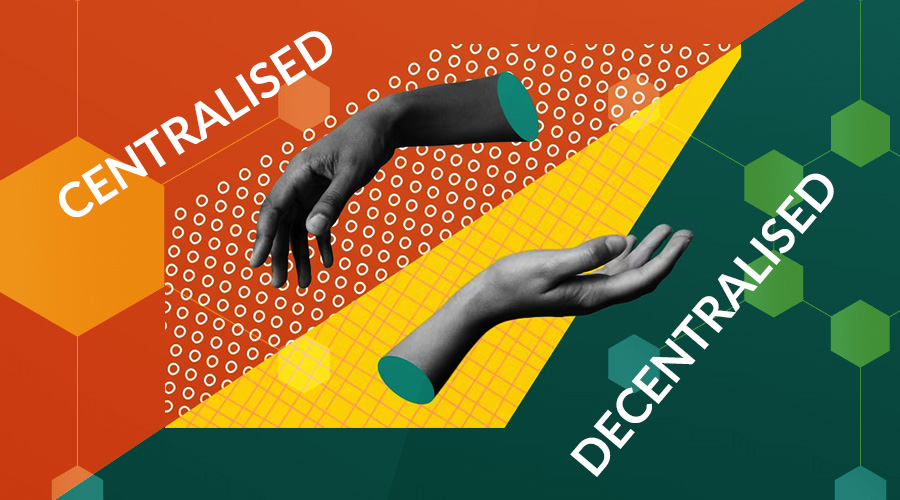 Unraveling the crypto conundrum: centralized and. decentralized
Unraveling the crypto conundrum: centralized and. decentralized
Step into the world of cryptocurrencies, where innovation and technology have disrupted the conventional financial landscape. In this article, we embark on a journey to explore two fundamental concepts in digital currencies – centralized and decentralized cryptocurrencies. These two models form the bedrock of modern finance, each with its distinct features and unique advantages.
Understanding Centralized Cryptocurrencies
Centralized cryptocurrencies, often termed “traditional cryptocurrencies,” are digital assets that rely on a central authority to oversee and manage their operations. These cryptocurrencies are typically created and issued by private companies or organizations that control all aspects of the currency’s ecosystem.
Characteristics of Centralized Cryptocurrencies
Central Control: In centralized cryptocurrencies, a central entity holds the reins of power, making crucial decisions regarding coin creation, transaction validation, and resolving network issues.
Governance Structure: A well-defined governance structure is often governed by a board of directors or a group of decision-makers. This structure enables faster decision-making but may also lead to potential biases.
Higher Scalability: Centralized systems boast higher transaction throughput, facilitating faster and more efficient transactions.
Faster Issue Resolution: In the face of technical difficulties or disputes, a centralized authority can swiftly address and resolve issues.
Examples of Centralized Cryptocurrencies
Ripple (XRP): Created by Ripple Labs, XRP is a centralized cryptocurrency designed to enable fast cross-border transactions for financial institutions.
Stablecoins: Many stablecoins, like USDC and Tether (USDT), are centralized cryptocurrencies pegged to the value of a fiat currency. They serve as stable mediums of exchange in the crypto world.
Understanding Decentralized Cryptocurrencies
In contrast, decentralized cryptocurrencies operate without the need for a central authority. Instead, they rely on blockchain technology and consensus mechanisms to maintain their networks and validate transactions.
Characteristics of Decentralized Cryptocurrencies
No Central Authority: Decentralized cryptocurrencies break free from the shackles of central control, making them immune to single points of failure.
Community Governance: Decentralized systems are often governed by their user community through consensus mechanisms like Proof-of-Work (PoW) or Proof-of-Stake (PoS).
Transparency and Security: Blockchain technology ensures transparency and immutability of transactions, rendering them highly secure against fraudulent activities.
Permissionless Transactions: Anyone can participate in the network without needing approval from a central entity, promoting financial inclusivity.
Examples of Decentralized Cryptocurrencies
Bitcoin (BTC): The pioneer of cryptocurrencies, Bitcoin, was created by an anonymous entity known as Satoshi Nakamoto. It relies on PoW consensus and remains fully decentralized.
Ethereum (ETH): Ethereum introduced the concept of smart contracts, empowering developers to build decentralized applications (dApps) on its platform.
A Comparison of Centralized and Decentralized Cryptocurrencies
Governance and Control: Centralized cryptocurrencies find comfort in embracing a central authority, while decentralized counterparts thrive on community-driven governance, embracing the soul of decentralization.
Transaction Speed and Scalability: The dance of centralized cryptocurrencies is swift and seamless, granting higher transaction throughput. Decentralized systems, however, may face the challenges of scalability, balancing efficiency, and inclusivity
Issue Resolution: Centralized systems exude an air of swift resolution, thanks to their central authority’s decisive power. In decentralization, consensus-based solutions take time but sow the seeds of trust and transparency.
Security and Transparency: While centralized cryptocurrencies might face the shadows of susceptibility, decentralized networks bask in the light of transparency and security offered by the incorruptible nature of blockchain technology.
Autonomy and Inclusivity: In the grand ballroom of decentralization, every participant is welcomed with open arms, free from needing approval. Centralized systems may require identification, but decentralized networks invite all to dance to the rhythm of financial freedom.
The Road Ahead: Embracing the Future
In the ever-evolving landscape of cryptocurrencies, centralized and decentralized models play pivotal roles in shaping the financial future. Each model caters to different user needs, and understanding their unique characteristics is crucial for making informed decisions.
As you set forth on your crypto journey, embrace the possibilities offered by these digital assets. Whether you value the speed and efficiency of centralized systems or the security and transparency of decentralized networks, the crypto world welcomes you with open arms.




